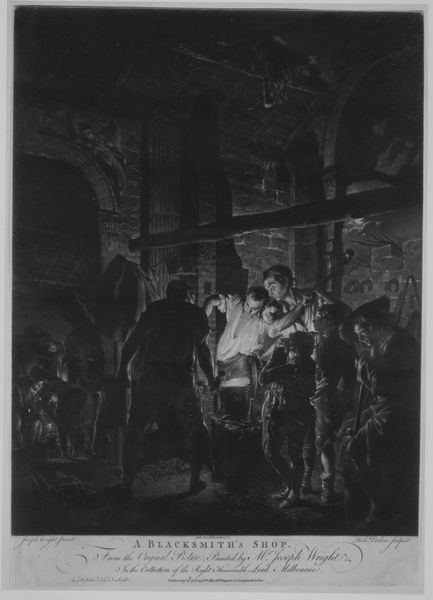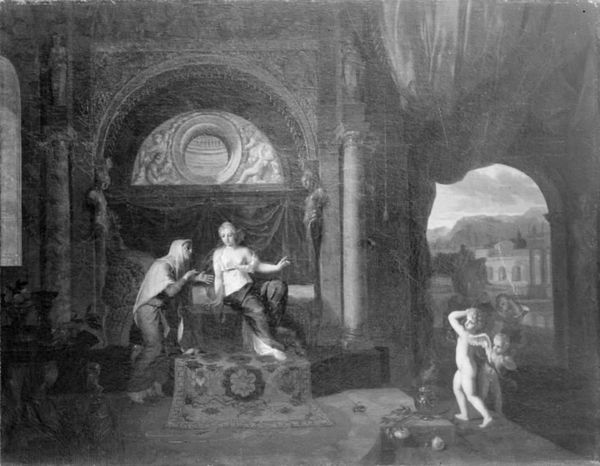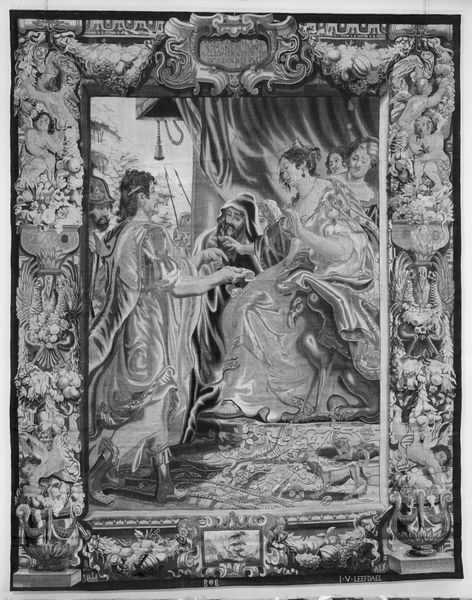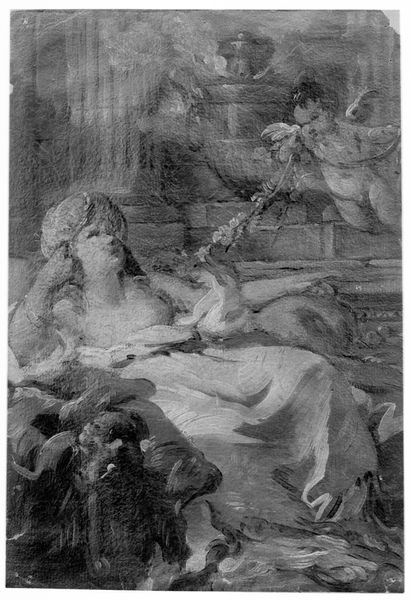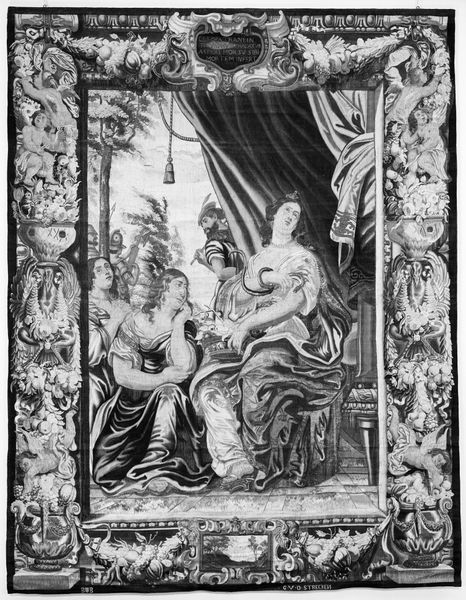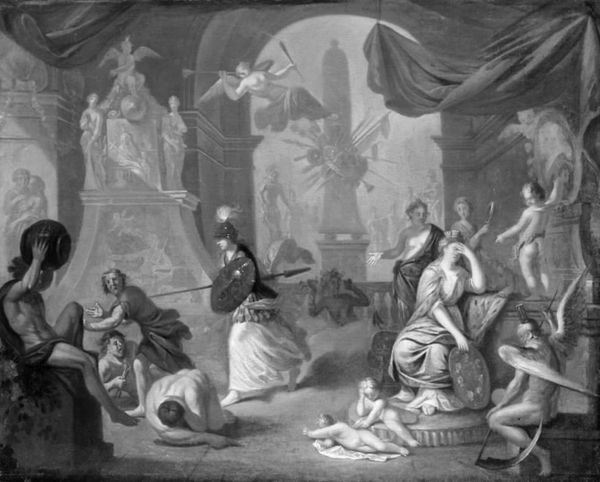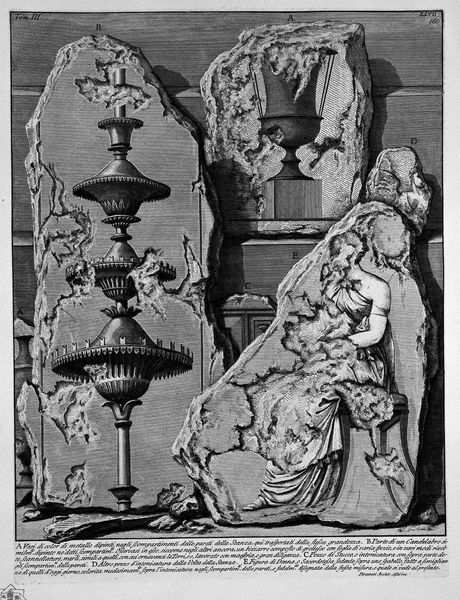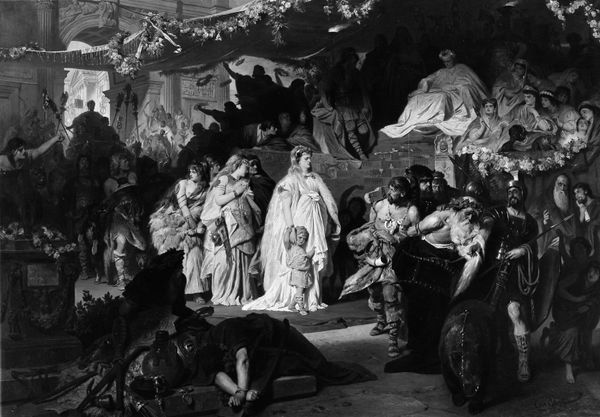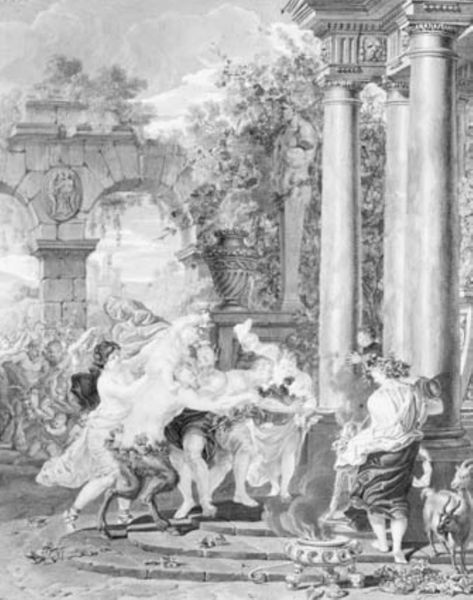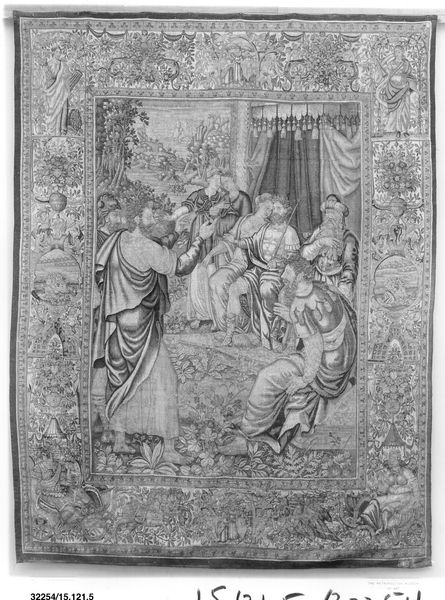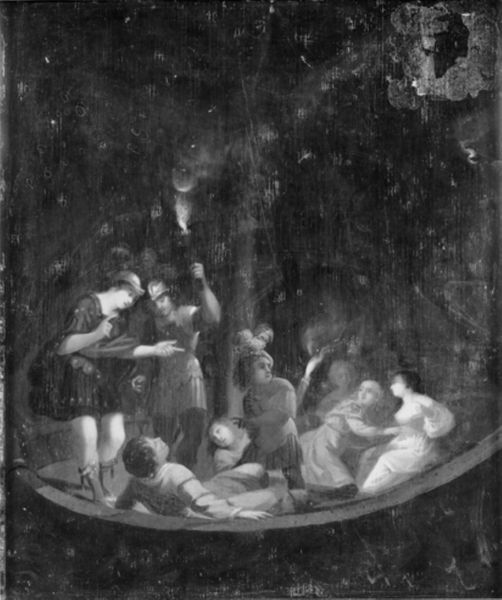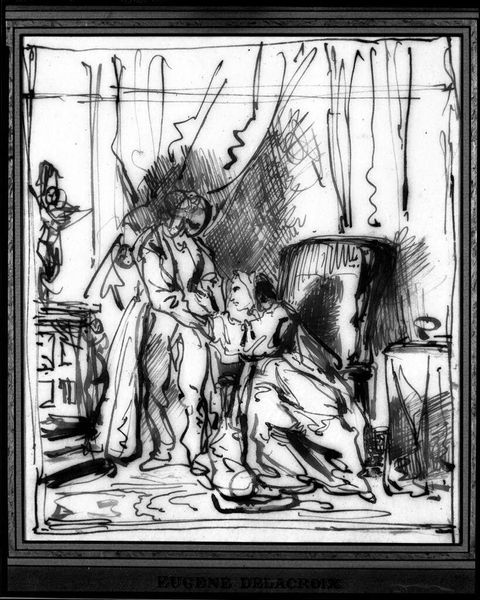
En ung fyrste på sin trone omgivet af allegoriske figurer 1708 - 1737
0:00
0:00
painting
#
allegory
#
baroque
#
painting
#
figuration
#
history-painting
#
academic-art
#
monochrome
#
monochrome
Dimensions: 74.5 cm (height) x 57.5 cm (width) (Netto)
Curator: This artwork, titled "En ung fyrste på sin trone omgivet af allegoriske figurer," which translates to "A young prince on his throne surrounded by allegorical figures", was created sometime between 1708 and 1737. Editor: It's striking, even in this monochrome image. The almost theatrical arrangement and multitude of figures create a real sense of grand spectacle. It looks meticulously posed. Curator: Indeed. It embodies many of the conventions of baroque academic painting. These sorts of grand historical allegories were intended to convey specific socio-political messages about power and legitimacy. Editor: And those messages are rooted in the context of its time, of course. I wonder about the intent behind placing a young prince at the center, amidst all these symbolic figures. The relationship to systems of power are immediately apparent. Curator: Consider also the role of museums in shaping these representations of authority. "En ung fyrste…" is currently held in the collection of the SMK - Statens Museum for Kunst, or the National Gallery of Denmark. Its display helps contribute to its continuous function as propaganda, a glorification of monarchical lineage and order. Editor: I'm especially drawn to the somewhat subdued, even somber, mood radiating from the piece despite its visual opulence. It gives one pause. This almost self-aware seriousness could tell us much about perceptions and fears around power during that period. Is the lion more caged, or is he guarding? It’s fascinating. Curator: Baroque art often walked this tightrope, you know. Ostensibly celebrating wealth and privilege, while also revealing societal anxiety and tensions. Editor: That makes one ponder, considering academic art today: How might this sort of work speak to current intersectional issues, perhaps gender roles and the implicit messages they carry even centuries later? I notice an intriguing mix of figures that could signify both dominance and dependence. Curator: Understanding those layered elements enriches our perception of how society’s hierarchies were idealized, perpetuated, or possibly challenged—even subtly. And it's through understanding them, that art history provides invaluable social commentary even now. Editor: A glimpse into how authority sought to define itself, as understood in context. Thank you for guiding us. Curator: Indeed. A revealing reflection on representation itself.
Comments
No comments
Be the first to comment and join the conversation on the ultimate creative platform.
